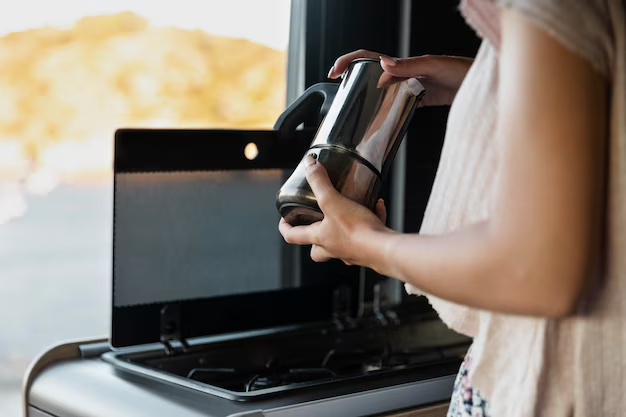Can You Put Le Creuset From the Fridge Straight Into the Oven? Here's Everything You Need to Know
When it comes to investing in premium kitchenware, Le Creuset often stands out as a timeless choice. Known for its quality, durability, and vibrant colors, it's no wonder Le Creuset finds a place in many kitchens around the globe. But for those who own or plan to own these iconic pieces, there's an essential question that needs answering: Can you take your Le Creuset cookware from the refrigerator straight to the oven? This question not only concerns the longevity of your cookware but also the safety and success of your culinary endeavors. Let's dive deep into this topic, exploring all angles and practical tips for getting the most out of your Le Creuset.
Understanding Le Creuset's Material Composition
Enameled Cast Iron: The Heart of Le Creuset
Le Creuset is most famous for its enameled cast iron pieces. This material is a masterpiece of engineering, combining the heat retention and distribution properties of cast iron with an enamel coating that prevents rust and improves ease of use.
- Heat Retention and Distribution: Cast iron is celebrated for its ability to retain heat efficiently, which is critical when you're cooking dishes that require even heating.
- Enamel Coating: This feature provides a smooth, non-reactive surface, which means you don't have to worry about flavor interactions between your cookware and acidic foods. Plus, it's relatively low-maintenance, unlike traditional cast iron.
The Durability Factor
Enameled cast iron isn’t just a buzzword; it’s a marker of quality. However, to maintain its exceptional qualities, it requires a respectful approach to handling temperatures.
The Refrigerator-to-Oven Question
Thermal Shock: What It Is and Why It Matters
The primary concern with transferring any cookware from the refrigerator to the oven is thermal shock. This phenomenon occurs when there is a rapid change in temperature, which can cause materials to crack or warp.
- Cracks in Enamel: Rapid temperature changes can potentially cause the enamel coating to crack, which could compromise its non-stick qualities and lead to rusting.
- Structural Integrity: Even if the enamel stays intact, the cast iron itself might suffer from sudden temperature shifts.
Can Le Creuset Handle It?
While Le Creuset is renowned for its durability, it's not immune to the laws of physics. For best results, it's advisable to take certain precautions.
Practical Tips for Using Le Creuset Safely
Avoiding Thermal Shock: Best Practices
You can minimize the risk of thermal shock by following these practical guidelines:
- Allow Gradual Temperature Changes: If possible, let your Le Creuset piece acclimate to room temperature for about 20-30 minutes before putting it in the oven.
- Preheat the Oven: Preheating will ensure the oven is at a constant temperature before introducing any cookware.
- Avoid Direct Heat: When heating on a stovetop after refrigerating, use low heat initially, then gradually increase it.
Oven Temperatures: How High Is Too High?
Le Creuset cookware is generally safe for oven use up to 500°F (around 260°C). Always ensure you're not exceeding this temperature to protect the enamel coating and the structural integrity of your pot or pan.
Related Considerations When Using Le Creuset
Versatility Beyond the Oven
One of the standout perks of Le Creuset cookware is its versatility. Aside from handling your oven needs, these pieces can seamlessly transition from stovetop to table, making them as functional as they are stylish.
- Stovetop to Oven: Perfect for dishes like casseroles and braises, which start with a sear on the stovetop and finish roasting in the oven.
- From Oven to Table: With a range of colors, Le Creuset pieces double as eye-catching serving dishes.
Maintenance and Care: Keep It in Top Shape
To ensure your Le Creuset lasts a lifetime, or even longer, follow these maintenance tips:
- Cleaning: Use warm, soapy water and avoid harsh scrubbers that might damage the enamel.
- Storage: Avoid stacking your pots and pans directly; if needed, use felt pads or cloth to prevent scratching the enamel.
The Le Creuset Lifestyle: More Than Just Cookware
Aesthetic and Function
While this article focuses on usage and durability, it's essential to note that Le Creuset is as much about lifestyle as it is about function. From the vibrant hues to the classic design, owning a Le Creuset piece often feels like more than just cookware—it's an investment in art and utility.
Summary: Key Takeaways for Successful Use of Le Creuset
Here is a quick-reference guide to ensure you're getting the most out of your Le Creuset:
- 🕒 Gradually Adjust Temperatures: Let your cookware sit at room temperature before transferring it from fridge to oven.
- 🔥 Preheat Your Oven: Always start with a preheated oven to maintain consistent temperatures.
- ⚡ Avoid Extreme Conditions: Stick to temperatures below 500°F to protect the integrity of your cookware.
- 🧼 Proper Cleaning & Storage: Clean with care and store with padding when stacking.
- 🍲 Versatile Use: Enjoy your cookware from oven to table for both taste and presentation excellence.
Navigating the nuances of kitchenware use can often feel like a chef's science, but understanding the properties and proper handling techniques of your cookware will ensure its longevity and your continued culinary success. With this guide, you're well on your way to enjoying all the benefits that come with your Le Creuset investment. So the next time you move your dish from the fridge to the oven, you can do so with confidence and flair!
